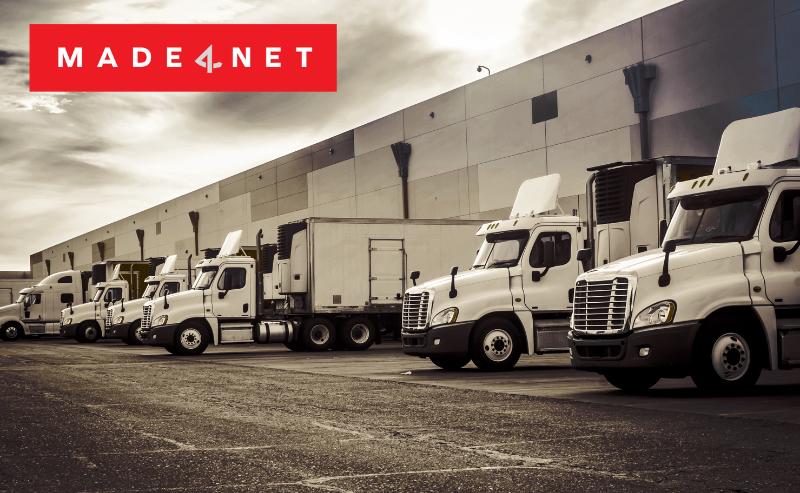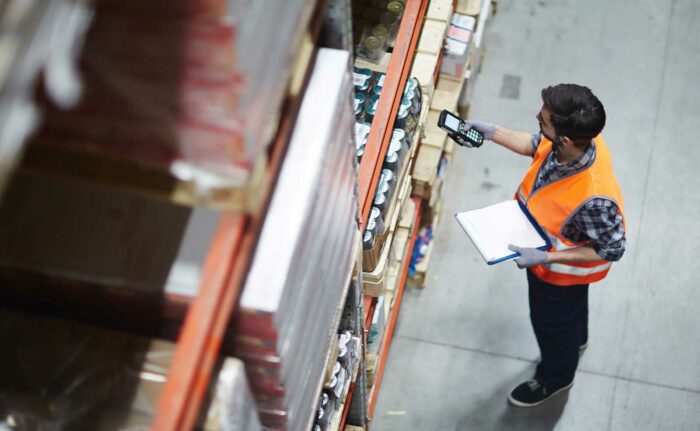
Yard management is the rigorous scheduling, coordination, and direction of assets within a dock or yard, best maintained with a yard management system. With it, operations can reduce delays, enhance visibility, and improve efficiency, transforming operations. To better understand how yard management can help strengthen your supply chain, in this article, we’ll be covering:
- What is Yard Management?
- Why is Yard Management Important?
- What are the Challenges of Yard Management?
- What is a Yard Manager?
- 6 Yard Management Best Practices
- What is Yard Management Software?
- Top 5 Features of Yard Management Software
- What are the Benefits of Implementing a Yard Management System?
What is Yard Management?
Yard Management is the process of overseeing the movement of trailers, trucks, and containers in the dock or yard, between the warehouse doors and the outside world. It’s where shipments arrive, get staged, and depart, and where delays or disorganization can create costly ripple effects across your supply chain. Yard management connects transportation and warehouse operations, bridging the gap to ensure nothing gets lost in the shuffle.
Why is Yard Management Important?
If your yard isn’t running smoothly, the rest of your operation suffers—your drivers get stuck and your customers wait longer. With effective yard management, you can reduce wait times, prevent bottlenecks, and help coordinate inbound and outbound logistics with precision. Some might say yard management is the unsung hero of supply chain execution, keeping freight flowing and delivery promises intact.
What are the Challenges of Yard Management?
Yard management comes with no shortage of challenges, and most of them lead to the same outcome: lost time and higher costs. Top issues include:
- Lack of real-time visibility into trailers and containers makes it difficult to respond to shifting priorities and disrupts decision-making across the yard.
- Outdated manual check-in/check-out processes introduce human error, causing mismatched data, inefficient asset tracking, and time wasted on routine status checks.
- Congested gates slow down inbound and outbound traffic due to poor gate control, delaying schedules, and driving up detention costs.
- Disconnected communication between drivers, dispatch, and warehouse staff leads to misalignment, missed handoffs, and scheduling headaches.
- Manual yard checks are labor-intensive and inaccurate, increasing the chance of misplaced assets or delayed loading.
- Dock scheduling conflicts create bottlenecks, extended dwell times, and missed delivery windows, causing a ripple effect across the supply chain.
It all adds up to wasted labor, lost opportunities, and missed SLAs.
What is a Yard Manager?
A yard manager isn’t just a person—it’s a role empowered by technology. In modern operations, the yard manager relies on a Yard Management System (YMS) to keep things moving, like Made4net’s YardExpert™. From assigning dock doors to tracking trailer movements and reducing idle time, the yard manager uses real-time data to orchestrate the chaos and keep the yard running like a well-oiled machine.
6 Yard Management Best Practices
Yard Management Best Practice #1: Real-time Asset Tracking
Up-to-the-minute visibility into the location and status of trailers, containers, and equipment enhances visibility, reduces search times, minimizes misplaced assets, and streamlines yard operations, leading to increased efficiency and reduced operational costs.
Yard Management Best Practice #2: Accurate Yard Mapping
Similar to the importance of warehouse layout, accurate yard mapping can make or break operations. When companies know what’s in their yard and where, they can accurately optimize shipping and receiving operations.
Yard Management Best Practice #3: Scheduling Yard Activities
Scheduling carriers helps avoid backups at the truck gate, crowded yards, over-extended receiving capacity, and driver wait time. Locked in appointments get trucks in the gate, and freight onto the floor.
Yard Management Best Practice #4: Gate Management
Streamlining check-in and check-out processes by automating data capture and reducing manual paperwork accelerates vehicle processing times, decreases congestion at entry and exit points, and enhances overall yard throughput.
Yard Management Best Practice #5: Clear Communication
Clear and automated communication within yard operations ensures that all stakeholders, including drivers, warehouse staff, and dispatchers, are aligned. This reduces misunderstandings, minimizes delays, and enhances coordination, leading to more efficient yard management and improved service levels.
Yard Management Best Practice #6: Continuous Improvement
There is always room for improvement, especially in industries that are constantly evolving. By using data and analytics, businesses can gain valuable insights into yard operations, empowering them to determine what areas need improvement.
What is Yard Management Software?
Yard management software provides operations with a solution to track the movement of trailers in the yard or dock of a facility. It helps businesses optimize the movement of trailers and containers to the best possible location in the yard for inbound and outbound operations.
Top 5 Features of Yard Management Software
Yard Management Software Feature #1: Scheduling and Tracking
Schedule and track appointments with vendors and carriers to reduce gate congestion and streamline throughput. Real-time appointment visibility improves dock utilization and helps prevent backups that lead to missed delivery windows.
Yard Management Software Feature #2: Inventory Visibility
Extended inventory visibility from yard to rack ensures continuous insight into trailer contents, dwell time, and availability. Knowing exactly which trailers are on-site and how long they’ve been there helps eliminate blind spots and reduce detention fees.
Yard Management Software Feature #3: Location Management
Manage yard zones, doors, and mobile assets across multiple enterprise locations from a single system. Smart trailer and tractor assignments reduce unnecessary moves and improve the flow of goods through the yard and into the warehouse.
Yard Management Software Feature #4: Task Prioritization
User-defined rules help prioritize yard movements based on urgency, equipment type, or appointment time. This improves labor utilization and ensures time-sensitive shipments are fast-tracked to the right dock at the right time.
Yard Management Software Feature #5: Gate Management
Automated gate management, including guard check-in and self-service kiosks, reduces wait times and enhances security by validating trailer and driver credentials. RFID and sensor integrations provide real-time data to accelerate entry and exit processes.
What are the Benefits of Implementing a Yard Management System?
Yard management empowers operations with greater visibility, tighter control, and improved accuracy. By delivering real-time insight and automation, it transforms the yard from a blind spot into a well-orchestrated extension of your supply chain. Reducing delays, maximizing dock utilization, and boosting labor efficiency means your yard becomes a reliable, high-performing link in the customer delivery experience.
Not sure which yard management solution is right for you? Our experts can help.


